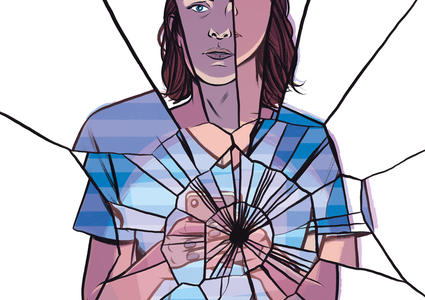Technology for a more efficient rehabilitation of people with limited mobility.
The stroke or cerebrovascular accident (CVA) is one of the main causes of death in the western world. In Spain it is the second leading cause of death and the first in women. Moreover, it assumes being the primary cause of disability and generates a very high expense for health and social services, which makes it one of the illnesses with most social impact. The scientists who developed the current Ictus Strategy of Spain’s Healthcare System evidenced this. According to its coordinator, the university professor of Neurology Jorge Matías Guiu, “its repercussion in the core of families, in the professional and labor field, and in the social sphere is enormous”.
Something similar happens with a spinal cord injury. Although its incidence is much lower, this condition also points out a massive public health problem, because it disables those affected and inhibits their ability to take care of themselves due to lack of mobility that affects all or most of their whole body.
Both injuries have always been linked to a bad prognosis and impossible recovery. However, the new strategies for managing patients, in conjunction with technological advances, are increasing the possibilities of a cure.
The most promising technologies in this matter in the most recent years have been developed in the fields of neurorobotics and biomechanics, such as brain control systems with devices or exoskeletons that allow a person previously paralyzed from the waist-down to get up and walk. However, these tools need to be improved because their potential has not been fully reached.
Making progress towards that goal is Juan Moreno, Colombian and Spanish bioengineer who has worked since 2002 in the Spanish National Research Council (CSIC). His personal research project focuses on the development of robotic tools for rehabilitation that are truly efficient and allow doctors to concentrate in treating patients, considering the mechanisms of neuroplasticity.
This focus is geared towards neural rehabilitation of patients, who have lost the ability to send the brain instructions to move the affected areas, basing itself on neuroplasticity: the brain’s ability to reorganize itself by means of making new neural connections. This ability can be developed as a response to injuries and illnesses as a form of adaptation to environmental changes, but it is not easy to accomplish this task.
The system thought out by Moreno aims to offer more precision than current therapies offer, so that health professionals can monitor the function of the affected patient’s nervous system, in order to design a model of time optimization of the robotic therapy, and generate new metrics of evaluation like brain function or the level of activity exhibited by the patient.
It involves an integrated focus that incorporates robotic assistance devices and brain-computer interfaces (BCI) with the nervous system, in order to research the efficiency of new rehabilitating paradigms like those based on neuroplasticity and to extend evidence that supports them.
To date, Moreno has developed a smart gait orthosis to compensate for muscular weakness in knees and ankles, which has been patented worldwide. Thanks to this, the young innovator received the Imserso Infanta Cristina 2011 award for his contribution to innovative technologies of high social impact. This orthosis has evolved to become the ESBIRRO exoskeleton -which has yet to be tested on humans- in order to extend its coverage to bilateral pathologies and a greater number of joints in the human body, and thus increase this technology’s potential.
On the other hand, the TR35 winner has coordinated the European project BETTER, which has yielded new developments in neurorehabilitation systems that combine brain-computer interfaces with exoskeletons. Specifically, they have created robotic modules that can be used for gait rehabilitation in a versatile way. These have been installed in clinical rehabilitation environments (in the Rehabilitation Hospital Fondazione Santa Lucia, in Italy) and are currently used to treat patients and to research neurophysiological aspects of walking disorders.
Moreno has also played an important role in an international project focused on artificial intelligence applied to physical rehabilitation, which has driven a bilateral cooperation between Spain and Japan, thus creating closer links between CSIC and its kindred in the Asian country (RIKEN), in collaboration with the manufacturer Toyota. The results of the project, coordinated by Moreno and the director of the Smart Behavior Control Unit of RIKEN, Shingo Shimoda have been recently widespread in the biorobotics international conference BioRob 2012.
These are his most distinguished recent topics of research, but they are not the only ones. Moreno is author or coauthor of more than 70 articles in science magazines -and conferences-, and editor of scientific journals like Medical and Biological Engineering and Computing or the Journal of Biomechanics.
The young innovator has shown his business interest not only with the application of his developments to clinical practices, but also by cofounding his own company: Technaid. In this business, associated with CSIC, the TR35 winner has participated in research and development activities that have resulted in hardware and software products for the capture and analysis of human movement.
In this manner, Moreno hopes to help patients with mobility problems to recover their lost abilities and provide them with greater independence in the performance of daily activities, thus improving their quality of life.
Even though there is still a long way to go, the immunology professor and researcher Jose Manuel Lozano, member of the jury of the TR35 Spain awards, believes that the importance of Moreno’s work is that it “is innovative, creative, and paves the way for applied research in diverse aspects of human health”. Meanwhile, Gabriel de Jesús Bedoya, professor at the Biology Institute of the University of Antioquia (in Colombia), and also a jury member of the TR35 Spain awards, believes that “the applications of his designs are direct and of great impact, and that the development strategy he has used bodes well for the unprecedented success of his work”. – Translated by Alfredo Corral


